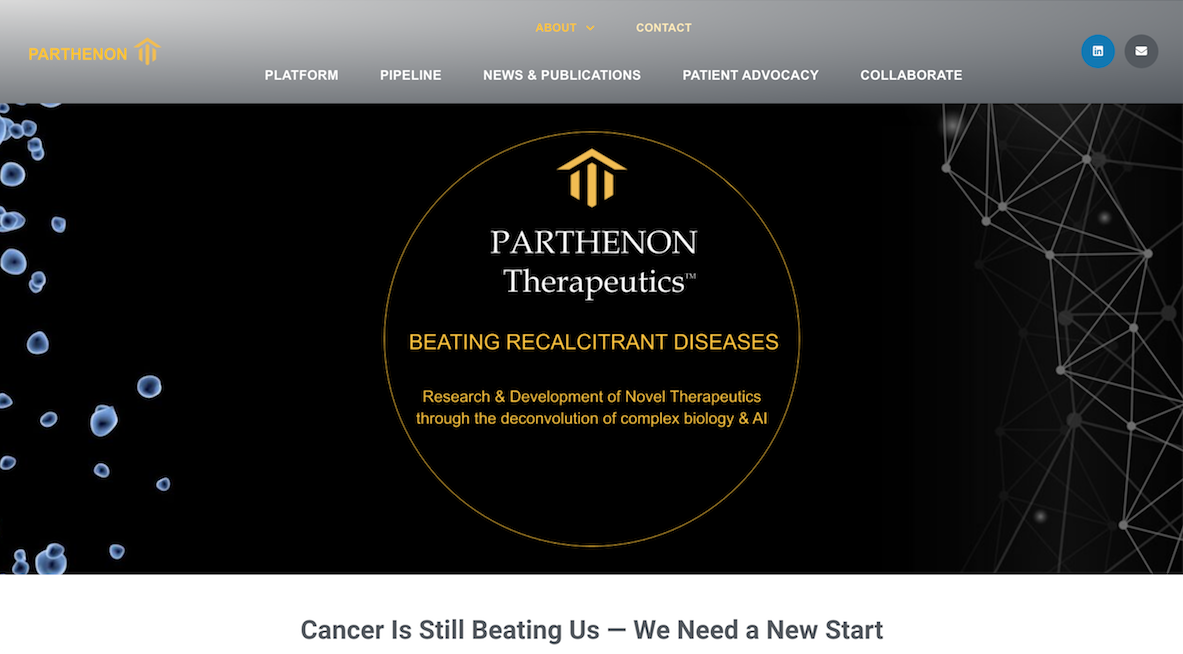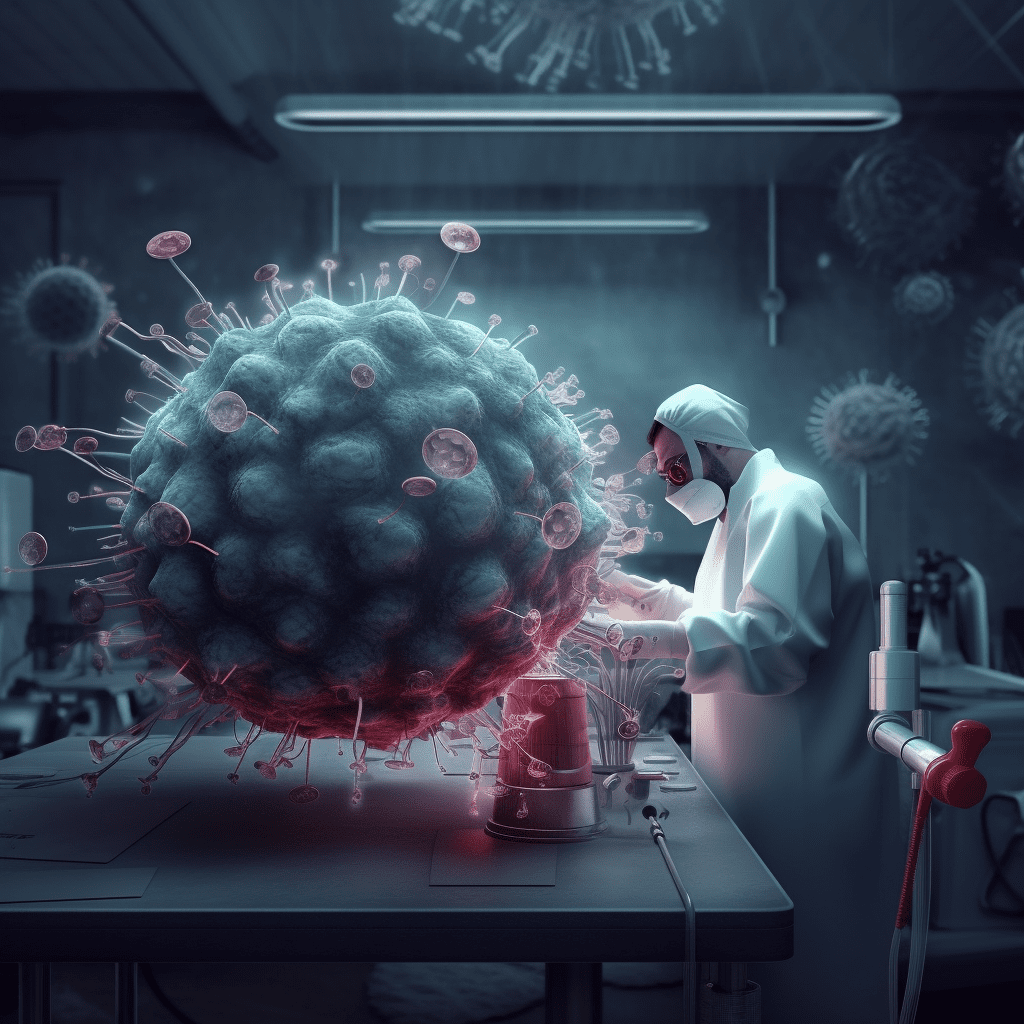Will AI Transform R&D? An Interview with Laurent Audoly, Parthenon Therapeutics
 6 years ago
By Josh Neil
6 years ago
By Josh Neil
The potential of AI and machine learning (ML) to transform almost every area of pharmaceuticals is profound. As we discovered recently in Proventa’s R&D White Paper, nowhere is this more evident than in research and development. Here, innovative technologies can transform how we look at drug discovery, utilising exponentially expanding computing power to find more targets than machine-unassisted labour could ever hope to. To find out more about a constantly evolving area, we spoke to Laurent Audoly, CEO and Founder of Parthenon Therapeutics, about his thoughts on AI in R&D and how his company is transforming the field.
As a biotech company, Parthenon utilises both deep insights into tumour biology, pharmacology and innovative machine learning techniques to target recalcitrant cancers. Parthenon’s platforms aim to leverage AI algorithms to increase drug discovery efficiency, decrease cycle times, and better understand the complexities of tumour biology in order to invent the treatment strategies of tomorrow and serve patients.
The ‘Year of AI’
The interview began with a discussion about the subject of Proventa’s recent White Paper: that 2020 could be the ‘year of AI’ for pharma R&D. Laurent suggested that while AI in R&D is on a constant positive trajectory – we won’t, he suggested, ever go backwards in our use of AI – the reality was a more gradual improvement than the sudden change suggested by the year of AI concept: “We should think of AI here as a slope, one that didn’t start last year and won’t stop next year. As AI advances, we’re becoming more in tune with the best application of this new technology and the opportunities it provides us.”
Laurent suggested that the best way to think of this trajectory was an overlaying of Gartner’s hype cycle with a diffusion of innovation curve. The sector, he said, was certainly now on the slope of enlightenment. In other words, while in some instances the promise of AI is still in the future, in many the promise is being realised. Therefore, there are huge opportunities for those who can make use of them.
Real Promise Versus Hype in the Sector
The conversation moved on to real changes being made today, versus what could be perceived as ‘overhyped’. Laurent was adamant that across the major focuses of AI in R&D today – identifying patterns and data analysis, delivering operational efficiencies and reducing cycle times – the focus should be on results and delivering value for patients and other stakeholders in the ecosystem. As experiments are conducted and these innovations are tested, what is and is not of worth will clearly be shown.
The conversation came back, he said, to burden of proof. If the only standard of success is having an AI-designed drug on the market, then the field is hard at work to get there. But the more reasonable standard at this stage is being able to create new hypotheses and better ways of analysing data and images, decreasing cycle times, increasing operational efficiency, and bending the curse of probability of success from the lab into and through clinical development. By that measure, the AI field is absolutely where it should be.
While no one area could be said to be ‘overhyped’, Laurent did mention that different parts of the R&D value chain are experiencing different uptick curves. In particular, a great deal of work is being put into medicinal chemistry design, into biology, and into the newer study of multi-omics. These areas, in part, are spearheading ML-based approaches to discovery.
A Case Study in ML-Based Innovation
Laurent pointed to his own company as an example of how AI-based technology can affect the progress of drug discovery. Parthenon’s unprecedented approach focuses on developing novel targets and co-targets. This can either be identifying a target in a novel context, two targets which might synergise in a counterintuitive manner, or a combination approach where aiming for synergy of efficacy or potency is one of the objectives underpinning a specific therapeutic hypothesis. In this field, running a combination study of 100 drugs would necessitate 5,000 individual experiments. This is reasonable for a lab to undertake. But when there are 1,000,000 possible combinations to run through, any physical study is unfeasible.
That’s where an algorithm such as Parthenon’s drug discovery engine can come in. Leveraging this engine would decrease the number of experiments to be physically performed by removing any which specifically won’t work. While a validation loop involving confirmatory experiments will always be needed, the overall workload can be massively reduced through the use of ML-based software to reduce the complexity of the task – both in terms of novel hypothesis generation and reduction in cycle time.
Laurent stressed that despite the usefulness of these algorithms to researchers, the ultimate and most important benefactor was the patient. He said: “We’re constantly thinking of how to optimise these applications and build better ones, specifically with the intention of delivering novel therapies that have the potential to better treat patients and improve mean survival.
He concluded that what was most important was to keep the conversation grounded in reality. When faced with challenges in R&D, a clear objective needs to be kept in mind. Decision-makers should be transparent about those objectives, and ensure proper calibration of experiment output. Laurent finally added that every professional in the life sciences space has a “citizen responsibility” to represent the field for what it is, not just what it could be, and to ensure that what is a constant positive advancement does not become just hype.
Joshua Neil, Editor
Proventa International

Role of an Immunologist: Exploring the Responsibilities
In the intricate web of human health, the immune system stands as a vigilant guardian, tirelessly defending against potential threats. At the forefront of understanding, deciphering, and harnessing the immune system's power is the immunologist. This article delves into the...
2 years agoRole of an Immunologist: Exploring the Responsibilities
In the intricate web of human health, the immune system stands as a vigilant guardian, tirelessly defending against potential threats. At the forefront of understanding, deciphering, and harnessing the immune system's power is the immunologist. This article delves into the...
2 years ago
Improving Warehouse Efficiency: The Role of Technology and Best Practices
In the fast-paced world of supply chain management, warehouse efficiency plays a pivotal role in ensuring timely and accurate order fulfillment while minimizing costs. With the rising demands of e-commerce and globalization, businesses are continually seeking innovative ways to optimize...
2 years agoImproving Warehouse Efficiency: The Role of Technology and Best Practices
In the fast-paced world of supply chain management, warehouse efficiency plays a pivotal role in ensuring timely and accurate order fulfillment while minimizing costs. With the rising demands of e-commerce and globalization, businesses are continually seeking innovative ways to optimize...
2 years ago
RNA Therapeutics: The World’s First mRNA Malaria Vaccine
Malaria represents one of the greatest unmet clinical needs in the world. In the last decade, research has been ongoing to develop effective preventative methods and effective treatment to reduce the risk of severe illness, which typically occurs in children....
4 years agoRNA Therapeutics: The World’s First mRNA Malaria Vaccine
Malaria represents one of the greatest unmet clinical needs in the world. In the last decade, research has been ongoing to develop effective preventative methods and effective treatment to reduce the risk of severe illness, which typically occurs in children....
4 years ago